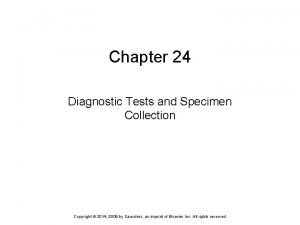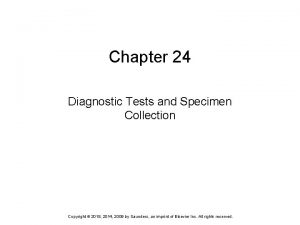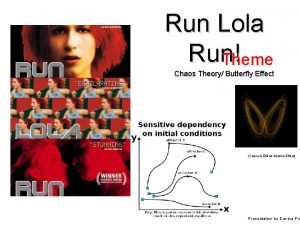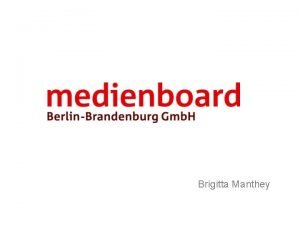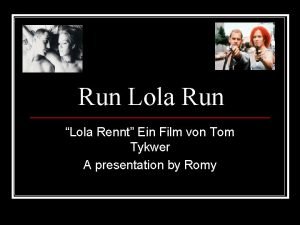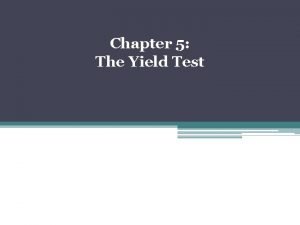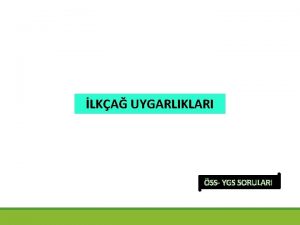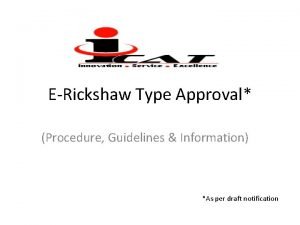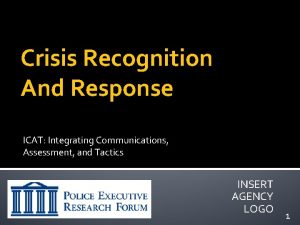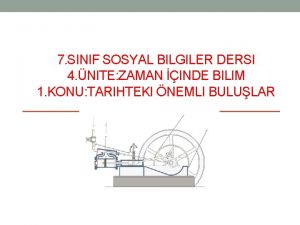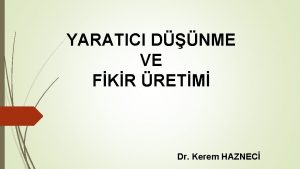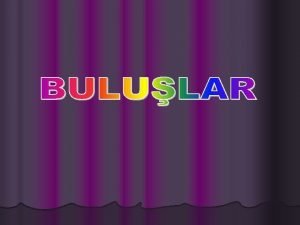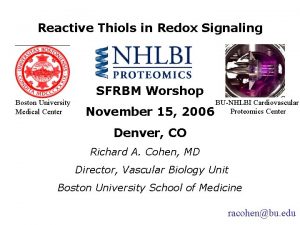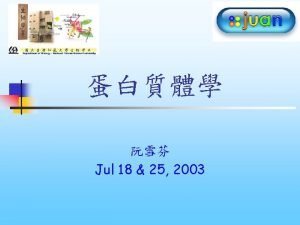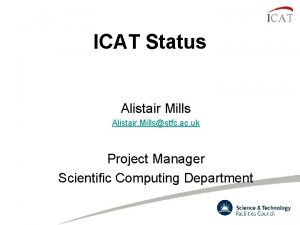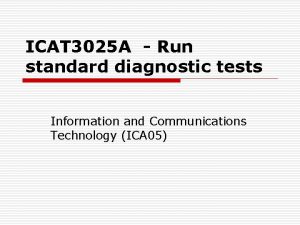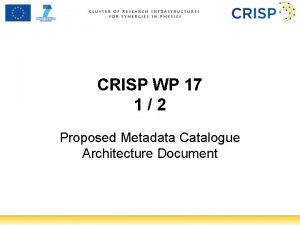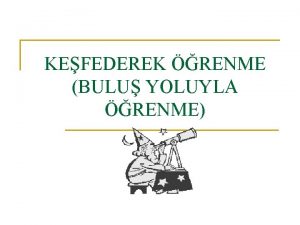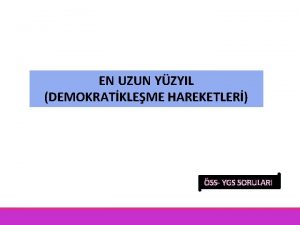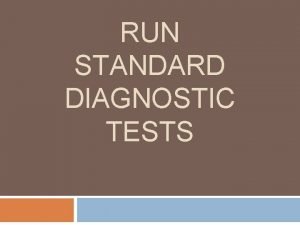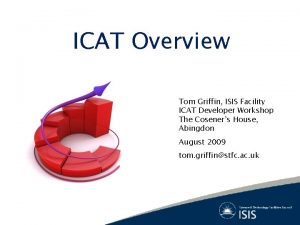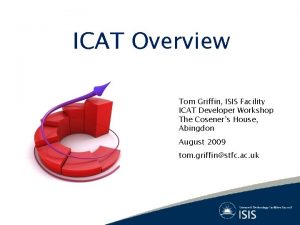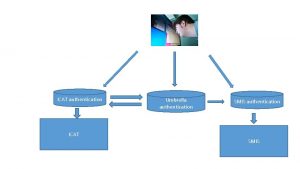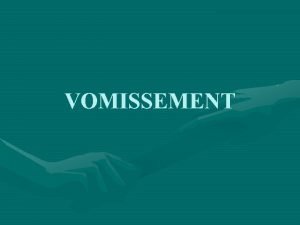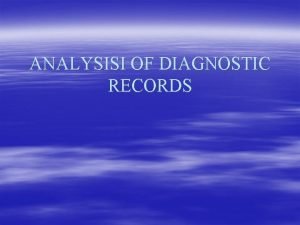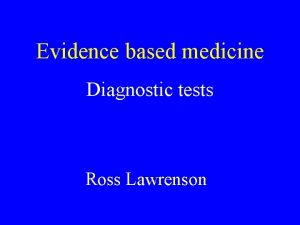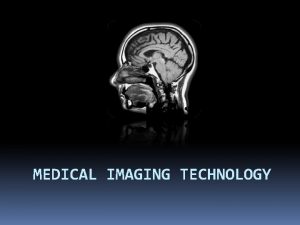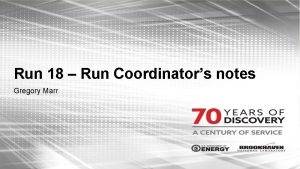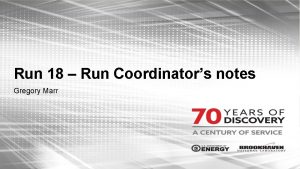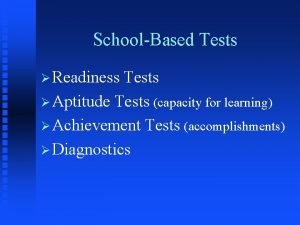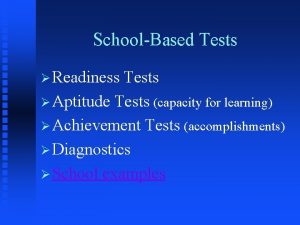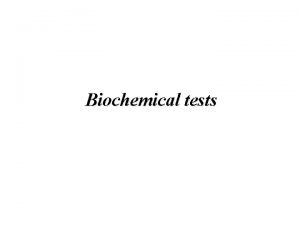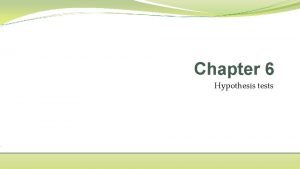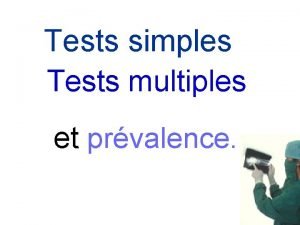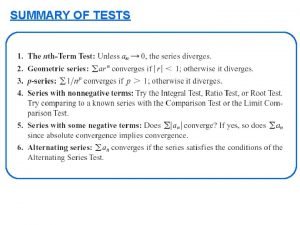ICAT 3025 A Run standard diagnostic tests Information




























- Slides: 28

ICAT 3025 A - Run standard diagnostic tests Information and Communications Technology (ICA 05)

Provide advice to clients o o o Analyse client support issues Provide advice on software, hardware or network Obtain client feedback

Analyse client support issues o o o Check for new problems logged by client Check previous logs for similar problems or requests from client Investigate and document the support issues affecting the client Notify client of the results of investigation and provide advice and support on findings Obtain client feedback and make changes

Provide advice on software, hardware or network o o o o o Confirm software, hardware or network requirements with client Investigate and document a solution Document additional requirements discovered in the investigation and refer them to the client Obtain approval from the client to implement the solution Investigate and document the amount of technical support the client may require Discuss and agree the level of technical support identified with the client Arrange a time with the client when support will take place Provide technical support as part of group or one-toone instruction to the client Provide manuals and help documentation to the client

Obtain client feedback o o o Create an appropriate evaluation or feedback form or other mechanism to gather feedback about the solution and support provided Provide client with instructions on how to complete the form or use other means of providing feedback Distribute the evaluation or feedback to the client Review the feedback from the client to identify areas for improvement

Key Terms and Concepts o o o o o o acceptable timeframes advanced features and functions of software advice and support approval policies and procedures audit trails basic features and functions of operating system benefits and limitations of solutions benefits of client feedback benefits of good customer service client feedback client needs analysis/assessment client support issues constraints contract and service agreements with vendors details to be documented features of different types of hardware good customer service interaction with client internal and external clients investigation methods known solutions to predictable problems log o o o o o acceptable timeframes macros and templates manuals and help documentation methods to obtain client feedback naming standards paper-based and electronic records personal attributes problem-solving report writing research skills review client feedback security and network guidelines and procedures sources of information standards for workplace documentation technical information technical support tracking process verbal and non-verbal communication version control.

Client o a client is anyone who needs your assistance; your client could be external (someone from outside your organisation) or internal (someone from inside your organisation) Customer service o assistance provided by an organisation to the people who buy or use its products or services

Client-focused organisation Benefits : o promotes goodwill o client loyalty/repeat business o new business o productivity o credibility o promoting company/organisation service ethic.

Client-focused ICT Staff Are : o sincere o confident o enthusiastic o efficient o interested in other people.

Client-focused ICT Staff Will document: o client contact details o a description of the problem o progress of each task o actions taken (both successful and unsuccessful) to n n n o answer enquiry fulfil request solve the problem Keep an up-to-date list of outstanding or urgent tasks.

Good customer service o o o o knowledge of company/organisation product/ service policies use language that is targeted to the specific customer present a friendly and courteous manner use positive gestures and body language ensure prompt response to enquiry/request adopt a solutions-oriented approach follow-up to maximise customer satisfaction.

Service level agreement (SLA) a written document that details the services a company will provide to a customer, the customer’s responsibilities and how the service performed will be measured (eg what a response time will be) o Organisational guidelines o the policies or procedures that are used to correctly perform a specific activity or operation within an organisation

Methods to investigate the support issue o o o interview the client using open, closed and reflective questions combined with active listening on-site observation/examination questionnaire focus group contacting vendor/maintenance organisation existing documentation

Constraints that apply to provision of advice/support o o o cost time available business policies and practices staff skills and training requirements room or building geometry.

Sources of possible solutions o o o o o colleagues company/organisation policies and manuals consultants suppliers personal/professional contacts ICT industry publications trade shows the internet technical manuals help documentation.

Process for developing solutions o o o o analyse client requirements design solutions discuss solutions with the client and choose a solution create and test solution demonstrate solution to client refine the solution document the solution.

Types of solutions o hardware n n o software n n o o upgrades new user training implementing a whole new system.

First level support o Refers to the initial support offered to a customer by a help desk operator; in this initial point of contact, the officer determines the nature of the call and will try to solve the problem if it is straightforward; support organisations usually have quite clear outlines of what constitutes first level support

Technical support can take many forms; o installation of hardware or software o documentation of hardware technical specifications o help documents for software

Escalation o Transferring a help desk call that cannot be resolved to personnel at a higher level such as an IT specialist or IT manager

Ticket o a term for a job currently logged Knowledge base o a knowledge base contains knowledge on how to solve specific problems – often an online database or website the customer support officer refers to.

Feedback o learner communicating to the instructor on whether the training meets their needs/expectations; instructor communicating to the learner on whether their progress has met the training/learning objectives

Value of client feedback o o o improving business relationships identifying and overcoming existing problems eliminating entrenched work practices improving productivity enhancing output quality future development of the company/organisation.

Methods to obtain client feedback o questionnaire n n o o paper electronic interview focus group.

When designing feedback o use of language n n n o questioning technique n n o targeted to client plain English minimising technical/industry jargon open, closed and/or reflective avoiding bias/leading questions opportunity for ‘free-response’.

Methods to distribute/enable feedback o written n n o mail electronic mail internet/intranet facsimile verbal n n n telephone one-on-one meeting.

Types of feedback o o o positive negative constructive.

Reporting feedback to appropriate person o o o supervisor/team leader management vendor supplier trainer colleagues.
 Solcelle virkemåte
Solcelle virkemåte Chapter 23 specimen collection and diagnostic testing
Chapter 23 specimen collection and diagnostic testing Chapter 23 specimen collection and diagnostic testing
Chapter 23 specimen collection and diagnostic testing Ace different iq tests but still
Ace different iq tests but still Long run perfect competition equilibrium
Long run perfect competition equilibrium Themes in run lola run
Themes in run lola run Run lola run editing techniques
Run lola run editing techniques Short run vs long run economics
Short run vs long run economics Multirule
Multirule Long run market supply curve
Long run market supply curve Lola brigitta
Lola brigitta Nn lolas
Nn lolas Test yield
Test yield Parşömenin bergama şehrinde icat edilmiş olması
Parşömenin bergama şehrinde icat edilmiş olması Iocs icat
Iocs icat Icat detective
Icat detective Sosyal dersini kim buldu
Sosyal dersini kim buldu 1474
1474 Scamper tekniğini kim icat etti
Scamper tekniğini kim icat etti Radyoyu icat eden kişi
Radyoyu icat eden kişi Sfrbm
Sfrbm 2d sds page
2d sds page Icat
Icat Dige definition
Dige definition Icat catalogue
Icat catalogue Icat aptitude test
Icat aptitude test Icat catalogue
Icat catalogue Keşfederek öğrenme örnekleri
Keşfederek öğrenme örnekleri Iltizam nedir
Iltizam nedir

